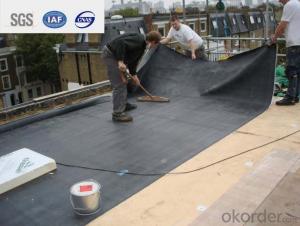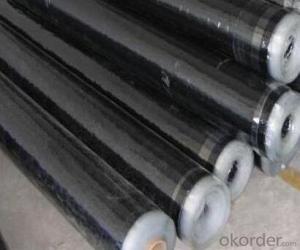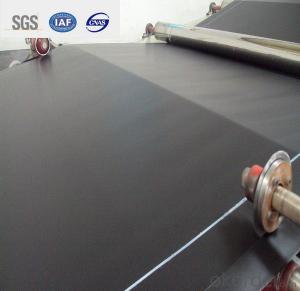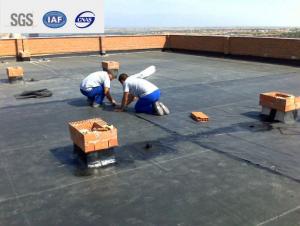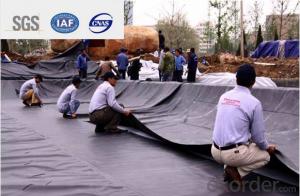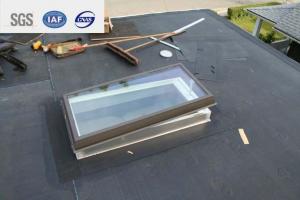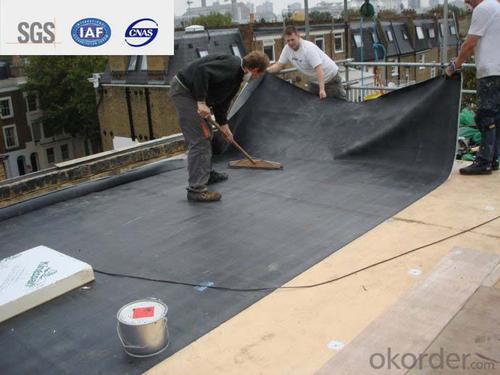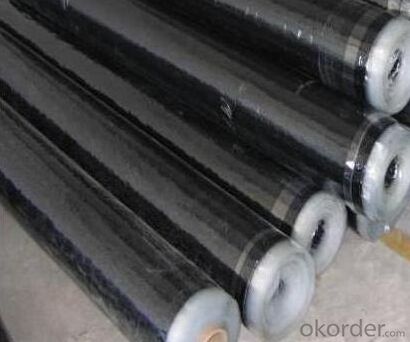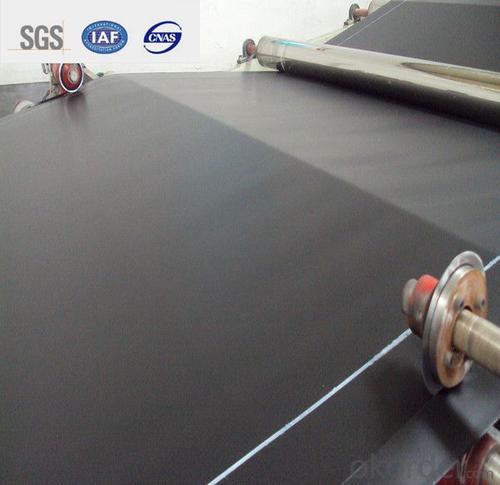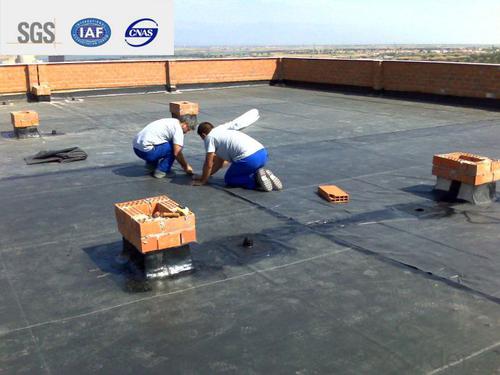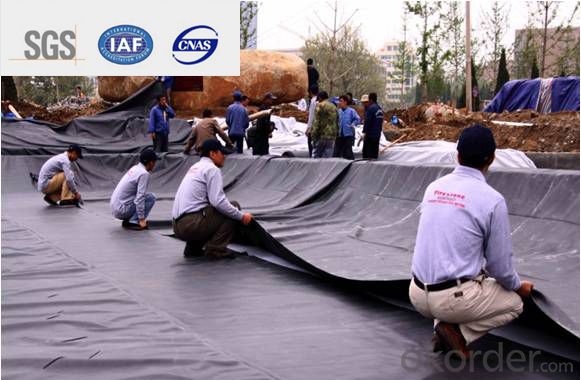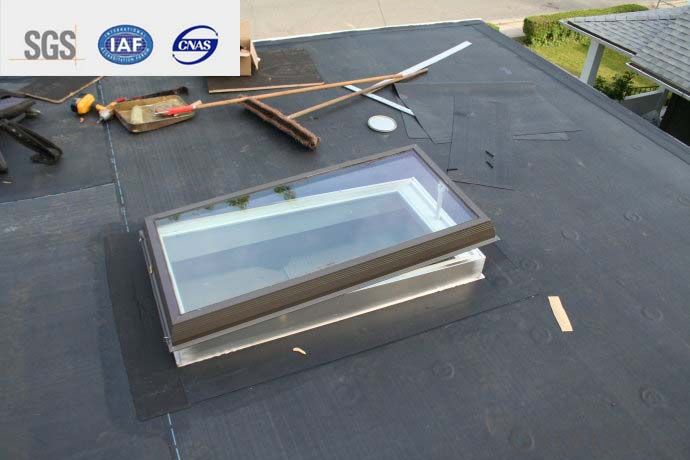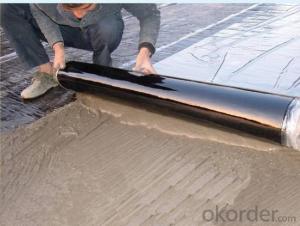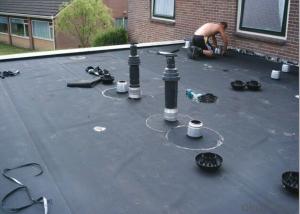EPDM Self-adhesive Waterproof Membrane for Rooftop Foam Material
- Loading Port:
- Qingdao
- Payment Terms:
- TT or LC
- Min Order Qty:
- 2000 m²
- Supply Capability:
- 800000 m²/month
OKorder Service Pledge
OKorder Financial Service
You Might Also Like
Description Of EPDM Self-adhesive Waterproof Membrane Foam Material:
1. EPDM Self-adhesive waterproof membrane is made from ternary ethylene-propylene rubber, which is for waterproofing of exposed and non-exposed applications.
2. EPDM Self-adhesive waterproof membrane production adopts the world-advanced equipment of cold feeding extrusion and continuous vulcanization technology.
3. EPDM Self-adhesive waterproof membrane is of high elasticity among high polymer waterproof materials and becomes a world-popular waterproofing material.
Main Features of EPDM Self-adhesive Waterproof Membrane Foam Material:
1 High tear
2 High puncturing strength
3 Great temperature resistance.
4 High dimensional stability
Specifications of EPDM Self-adhesive Waterproof Membrane Foam Material:
Material | EPDM Rubber |
Size | 1.2m (width)*20m (length) or customized, weldable type 2.05m or 4m width |
Thick | 1.2mm, 1.5mm, 2.0mm |
Type | Vulcanized & Weldable |
Pattern | Non-reinforced (homogeneous) |
Certificate | ISO9001/14001 |
Applications of EPDM Rubber Waterproof Membrane Foam Material:
Widely used for kinds of cold/hot medium piping and containers in central control air condition, construction, chemical
industry, medicine, light industry, textile process, metallurgy, boat, vehicle, electrical apparatus and others fields to reduce
cold/thermal loss.
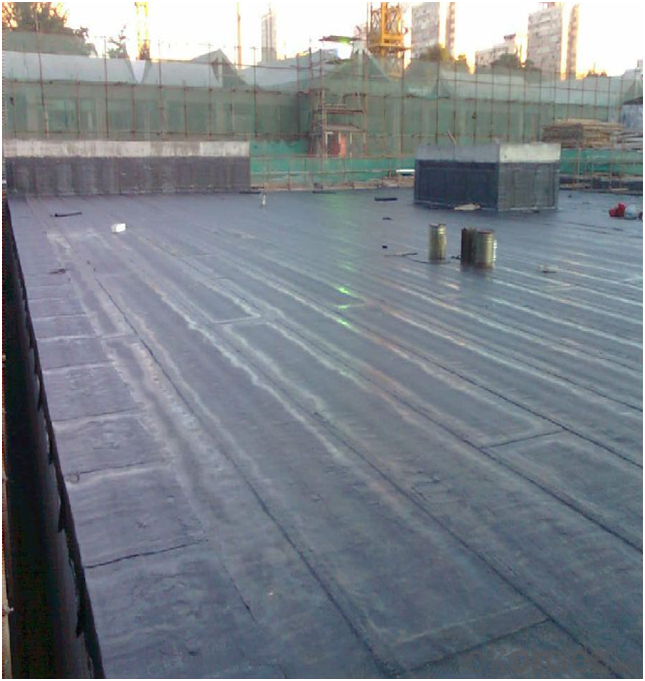
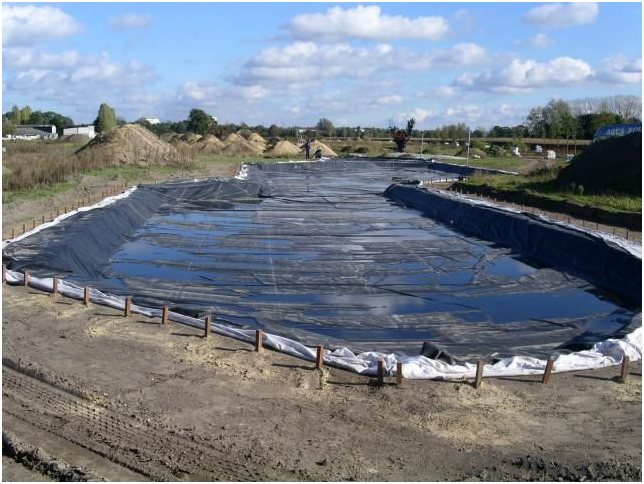
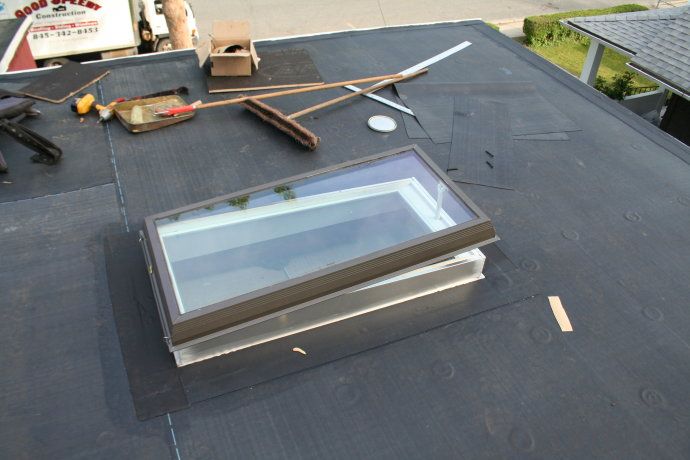
FAQ:
1. What are we supplying?
We are specialized in producing Colorful Asphalt Roof Shingle, SBS/APP modified bitumen waterproof membrane, Self adhesive bitumen waterproof membrane, PVC waterproofing membrane, EPDM rubber roofing membrane, Single Component Polyurethane Waterproof Coating, and Spray Polyurea Waterproof Coating.
2. How Many years experience do we have?
We have been exported to more than 20 countries in the past 15 years.
3. How long do we usually reply your request?
We always reply our customer within 24 hours.
- Q: Can a waterproofing membrane be used on stone block surfaces?
- Stone block surfaces can indeed benefit from the use of a waterproofing membrane. This particular membrane is specifically designed to create a protective barrier against water and moisture, making it suitable for application on various surfaces, including stone blocks. By acting as a barrier, this membrane effectively prevents water from seeping into the stone and causing detrimental effects such as cracking, spalling, or efflorescence. It offers valuable protection against water-related issues such as freeze-thaw damage and the growth of mold and mildew. Moreover, the application of a waterproofing membrane can significantly enhance the durability and longevity of stone blocks by shielding them from water damage. Consequently, it is highly recommended to utilize a waterproofing membrane on stone block surfaces to ensure their long-term integrity and aesthetics.
- Q: Can a waterproofing membrane be used on roofs with slope?
- Roofs with slope can use a waterproofing membrane. It is commonly applied on sloped roofs to add an extra layer of protection against water infiltration. The membrane is typically placed beneath the roofing materials and acts as a barrier to stop water from seeping into the roof structure. This is particularly crucial for sloped roofs as water runoff is faster and may lead to leaks or damage. The waterproofing membrane is designed to be flexible and is able to adapt to the roof's slope without compromising its effectiveness. Moreover, it also enhances the roof's durability and lifespan by preventing moisture-related problems like rot or mold growth.
- Q: Can a waterproofing membrane be painted over?
- Yes, a waterproofing membrane can be painted over. However, it is important to ensure that the membrane is clean, dry, and free from any debris or loose material before applying paint. Additionally, it is recommended to use a paint that is specifically designed for use on waterproofing membranes to ensure proper adhesion and longevity. It is also important to follow the manufacturer's instructions for both the waterproofing membrane and the paint to ensure compatibility and effectiveness.
- Q: Can a waterproofing membrane be used on wood block surfaces?
- Yes, a waterproofing membrane can be used on wood block surfaces. The membrane acts as a protective barrier, preventing water penetration and potential damage to the wood. It is a common practice to use waterproofing membranes on wood block surfaces in order to enhance their durability and longevity.
- Q: Can a waterproofing membrane be used in basements and foundations?
- Basements and foundations can benefit greatly from the use of a waterproofing membrane. It is highly recommended to apply this protective layer in order to safeguard against water infiltration and moisture-related problems. Typically, the membrane is applied on the outer side of the foundation walls and basement floors, effectively creating a barrier that prevents water from permeating through the concrete. This essential measure ensures that the basement and foundation remain dry, minimizing the risk of water damage, mold growth, and structural complications. There are several types of waterproofing membranes available, including bituminous, rubberized asphalt, and liquid-applied options. This variety allows for flexibility when selecting the most suitable option according to the specific project requirements. Ultimately, installing a waterproofing membrane is a reliable means of improving the overall resilience and longevity of basements and foundations.
- Q: Can a waterproofing membrane be used for underground bunkers?
- Yes, a waterproofing membrane can be used for underground bunkers. Waterproofing membranes are designed to create a barrier against moisture, preventing water penetration into structures. This makes them an effective solution for underground bunkers, which are susceptible to water infiltration due to their underground location. By applying a waterproofing membrane to the walls and floor of the bunker, it can help to prevent water seepage and keep the interior dry. This is crucial for the protection of any stored items or occupants within the bunker. Additionally, waterproofing membranes can also provide added benefits such as insulation and protection against radon gas. It is important to ensure that the chosen membrane is specifically designed for underground applications and can withstand the unique conditions and pressures associated with being underground.
- Q: Is a waterproofing membrane resistant to solvents or chemical spills?
- Generally, waterproofing membranes tend to resist solvents and chemical spills. They are engineered to shield against water and other liquids, including solvents and chemicals. These membranes often consist of materials like PVC, TPO, or EPDM, which exhibit impressive resistance to different solvents and chemicals. Nevertheless, the degree of resistance can differ based on the membrane's type and composition. It is advisable to review the manufacturer's specifications and seek guidance from experts to confirm the membrane's compatibility with particular solvents or chemicals prior to installation.
- Q: Can a waterproofing membrane be used on aerated concrete block surfaces?
- Yes, a waterproofing membrane can be used on aerated concrete block surfaces. The membrane helps to prevent water penetration, protecting the aerated concrete blocks from moisture damage and increasing their longevity.
- Q: Can a waterproofing membrane prevent leaks from occurring?
- Yes, a waterproofing membrane is specifically designed to prevent leaks from occurring by providing a protective barrier against water intrusion. It acts as a waterproof layer that helps to seal and protect various surfaces, such as roofs, foundations, and basements, from water penetration and potential leaks.
- Q: SBS modified asphalt waterproofing membrane and synthetic polymer membrane the same, not the same, what is the difference?
- SBS modified asphalt waterproofing membrane is a kind of high-polymer modified asphalt waterproofing membrane, high polymer modified asphalt waterproofing membrane is synthetic polymer modified asphalt coating layer,
Send your message to us
EPDM Self-adhesive Waterproof Membrane for Rooftop Foam Material
- Loading Port:
- Qingdao
- Payment Terms:
- TT or LC
- Min Order Qty:
- 2000 m²
- Supply Capability:
- 800000 m²/month
OKorder Service Pledge
OKorder Financial Service
Similar products
Hot products
Hot Searches
Related keywords
